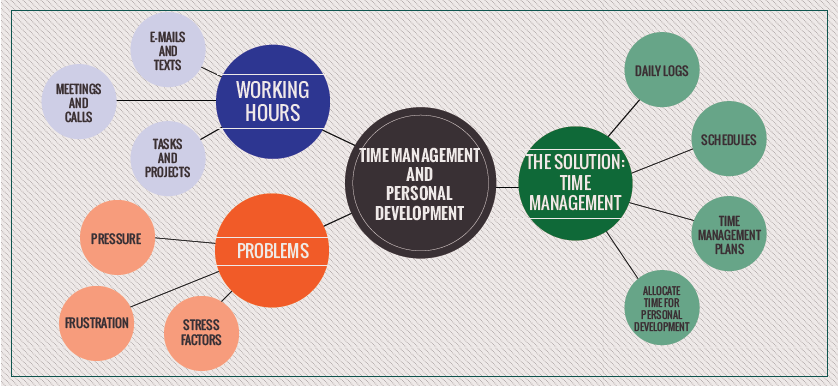Remote Management 101: Keeping Your Team Focused

By 2020, half of the workforce will work remotely, and currently, 68% of Australian employers allow remote working. The last few years have seen the idea of flexible working come to fruition.
Get the opportunity to grow your influence by giving your products or services prime exposure with Performance Magazine.
If you are interested in advertising with Performance Magazine, leave your address below.

By 2020, half of the workforce will work remotely, and currently, 68% of Australian employers allow remote working. The last few years have seen the idea of flexible working come to fruition.

Getting up early, spending 40 minutes on physical exercises, over 2 hours a day on e-mails and texts, around 2 hours and 45 hours per day in meetings and conference calls, 1 hour and 45 minutes per day on tasks and projects, and allotting 30 minutes to personal development.
That is how we could sum up the data of a recent survey conducted by The Center for Management and Organization Effectiveness among successful executives from top companies in North America, such as Adobe, Bank of America and Google, just to name a few, in order to find out how they manage their time.

Measures the average time spent by physicians, on consulting patients.


News that Sweden introduced the six-hour work day spread like wildfire and ignited the hopes of employees worldwide. Spending ten hours a week less at the job for the same paycheck without loss of productivity sounds brilliantly profitable.
So now it’s time to talk about time: what evidence is this initiative based on? What are the odds that it will succeed? Will it pass the test of time?
Since the end of 2015 the internet has been spammed with news regarding Sweden’s newly adopted policy of implementing the six-hour work day. Digital and social media quickly and enthusiastically disseminated the announcement.

However, after a bit of research on the Internet, it would seem that the story is quite different in actuality. The way it is described makes it sound like the six-hour day is the norm in Sweden, or even that it has been adopted at the governmental level and is mandatory for implementation.
The phenomenon is not even close to being of such a magnitude. Most initiatives are still trials and have been partially adopted in most cases and only by small companies, start-ups or certain departments within larger firms.
One of the most often quoted and misrepresented experiments of 2015 started in February of the same year, in the Svartedalens elderly care home in Gothenburg, where the schedule had been reduced for 82 nurses, but the actual precedent was set at a Toyota service center, where the mechanics’ working hours were decreased to the now famous 6-hour work day. These are the two frail sparks that ignited the whole media fire.

Definite conclusions have yet to be drawn on the results of the Swedish initiatives, however, it is indisputable that the country’s citizens work some of the shortest hours in Europe. In this regard, an efficient way to assess the correlation between time and performance is by comparing the Average annual hours actually worked per worker classification with the Global competitiveness rankings.
Working hours, as the name suggests, are calculated by dividing the total number of hours worked over the year, in a specific country, by the average number of people in employment. Performance, according to the Global competitive index, is a country’s productivity rate and can be put in numbers by analyzing the level of prosperity of its citizens, on 12 pillars, such as infrastructure, health, education, innovation and so forth.
Switzerland tops the competitive rankings, followed by Singapore, the United States, Germany, Netherlands, Japan, Hong Kong, Finland, with Sweden in the 9th place and the U.K. in the 10th.
Surprisingly enough, many of these highly productive countries are among those with the smallest number of working hours per employee. In Germany, the average number of working hours is less than 1400/ year, while in Sweden this number is around 1600, which is the reason why the country occupies the 8th place on the list.
To get a better perspective, if we had to compare these figures to say those of Mexico, an employee working in the North American country clocked in an average of 2.228 hours in 2014.
Even though correlation does not equal causation and given that there is a tremendous variety of factors influencing the economic performance of a nation, we still cannot ignore the fact that the most prosperous and productive countries are the same countries where employees work less than average.

The logic behind the results
The following dichotomy, working time-performance, can be analyzed from multiple points of view: economic, psychological, sociological etc. Even from a health perspective, working over 55 hours a week has been proven to reduce productivity and increase the risk of stroke by 33% and the risk of coronary heart disease by 13%.
From a psychological standpoint, Parkinson’s law is worth mentioning here, as it states that “work expands so as to fill the time available for its completion” and is thereby elastic from a temporal point of view, to a certain extent. One’s workload has a tendency to grow in size, complexity and importance proportionately to the time allocated for fulfilling it.
This means that the same task can be “stretched” and solved by a single person in more time than is necessary, or in a shorter time span but by more people than needed. The classic example for this law is a growing bureaucracy which creates enough redundant tasks in order to keep itself busy and its existence justified.

On the one hand, if the time allotted to fulfilling a task is shortened, said task becomes less complex and easier to solve. Of course, if the set deadline is too tight, a decrease in quality might also be observed. Bottom-line, a set of assignments could be done quicker by the same amount of people, but the allocated time has to be carefully planned in order to not decrease quality.
On the other hand, these factors could bring about a series of negative effects on the employees whose work time has been reduced, topped by extra pressure to solve tasks more efficiently.
Thus, lunch/coffee breaks might become shorter, social media or personal e-mail access could be entirely banned, social conversation amongst colleagues may be reduced to a minimum, making the overall working experience and environment more stressful and less enjoyable.
As researchers have highlighted, introducing the six-hour work day might indeed be beneficial, first of all for the employees and secondly for the clients. The Swedish retirement home trial has been reported to be a success so far, enabling a better life-work balance and reducing stress levels for its employees, thus increasing the quality of their services and boosting job satisfaction levels.
However, the nursing home did have to employ 14 new staff members in order to keep up and the initiators confess that it is a costly endeavor, so, even if there are positive social improvements, economically the experiment is portraying a different picture.
All things considered, working less for the same financial reward sounds like a fairy tale and as of right now, remains a matter of fantasy even for most employees in Sweden. The trial results, although inconclusive, have certainly set a precedent for future research, in a world where the line between personal life and work is slowly fading away. One can only hope to see what the future brings next.
Image sources: